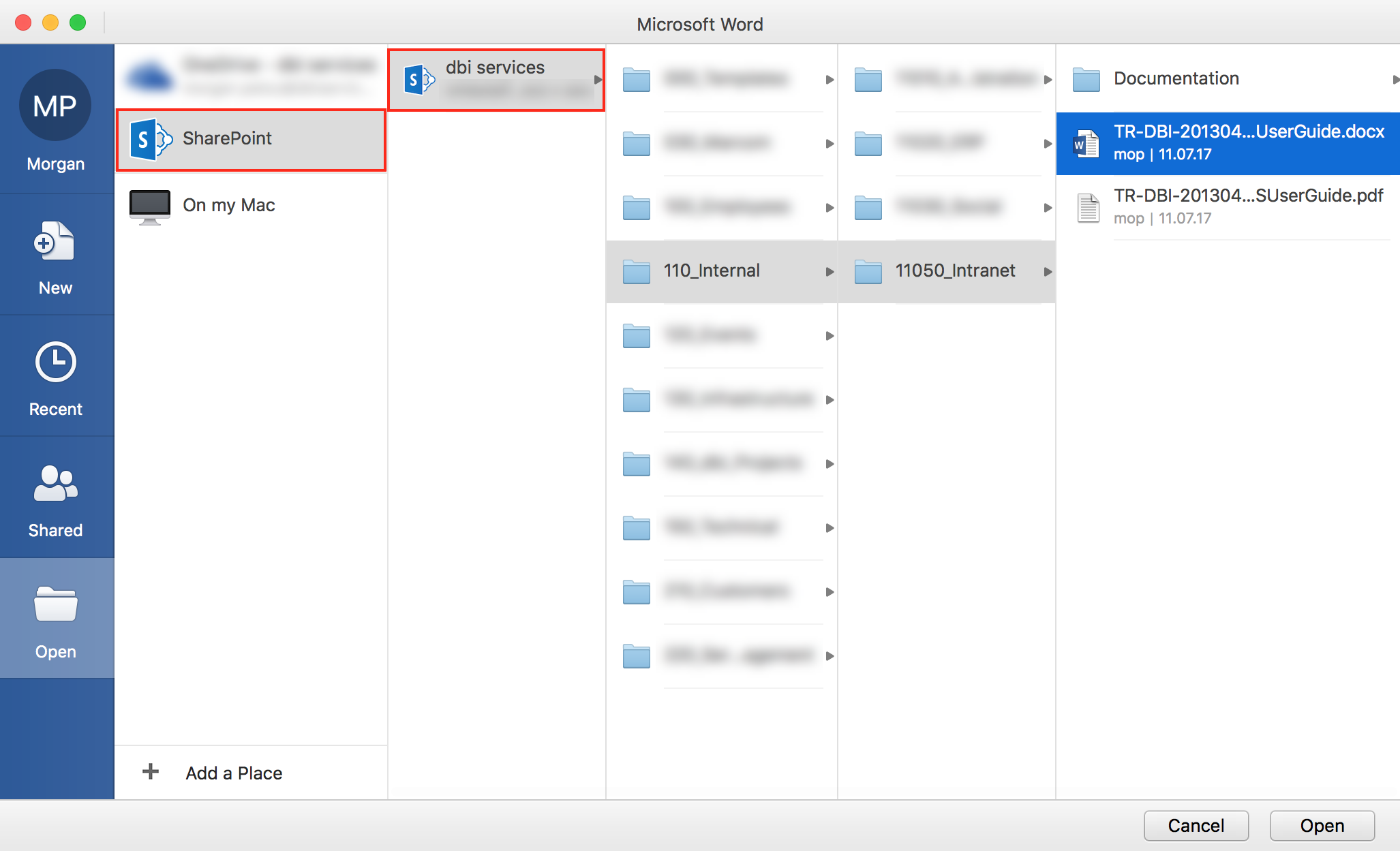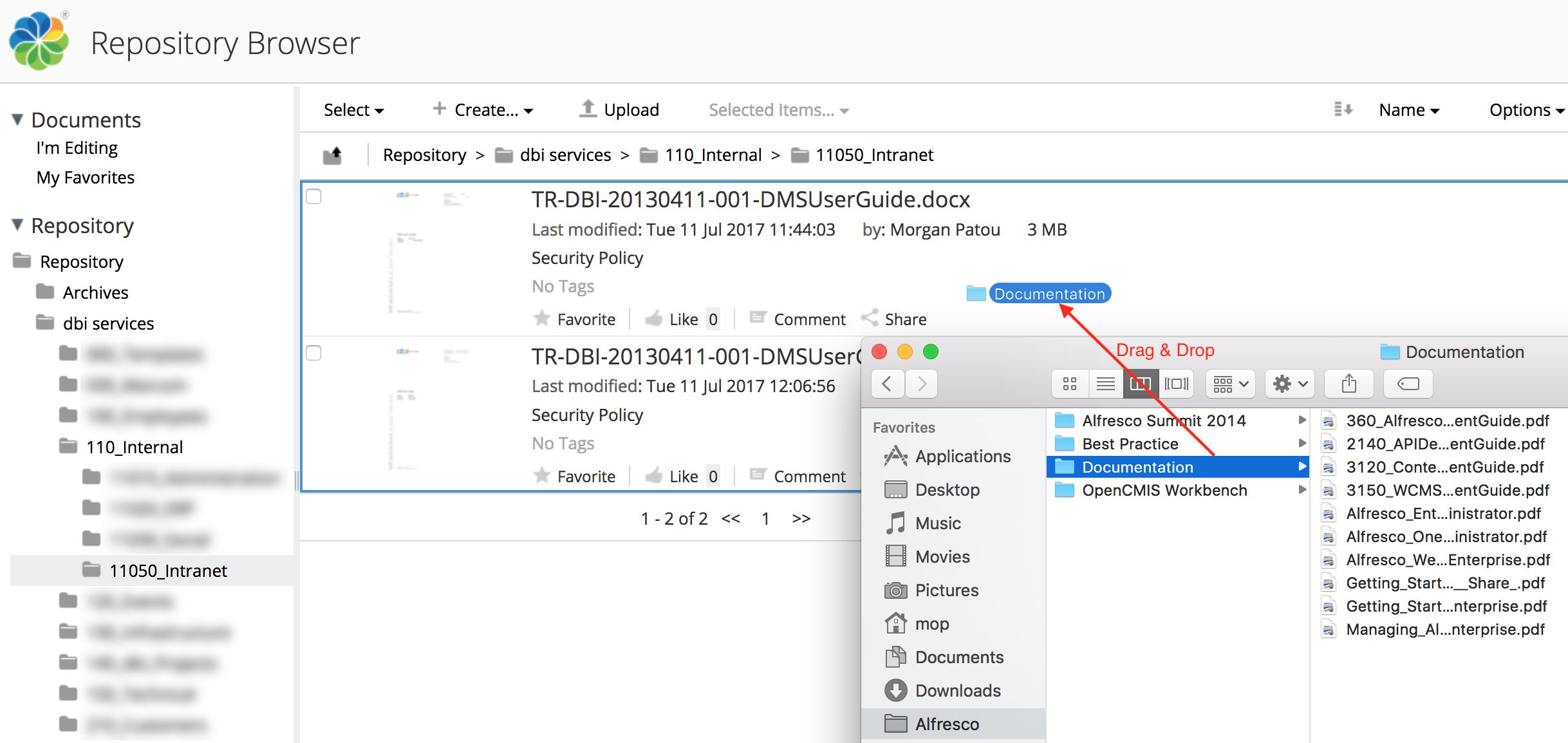Introduction
Nowadays companies have to deal with lots of electronic documents, some of them being mission critical. Insurances, Banks and Pharma industries are good candidates for ECM/DMS solutions since they produce and deal with lots of documentations, contracts and receipts. Usually the largest ECM/DMS infrastructures can be found at those customers which initiate large digitalization processes. However even for smaller businesses, managing e-documents like sales quotations, offers, answers to RFIs and RFPs becomes mission critical. Indeed, while creating such quotations and offers, collaboration is often requested between salesmen and eventually with the technical department too. The ECM/DMS solutions must offer the means to share and work together on the same document. Unfortunately these documents are, most of the time, simply lying around on a basic Windows Share, if the users even took the time to copy the documents on this share. As a result, there is no concurrency management, preventing any data loss and the “locking strategy” is quite simple: “last wrote … won”. It’s even incredible to see how many “larger” companies still work like that. All companies follow the digitalization trends but sometimes in a quite elementary way.
So basically what prevents the usage of a ECM/DMS solution in all companies? From my point of view, most of the time ECM/DMS projects are wrongly sized and approached. Indeed, each customer has lots of good intentions at the begin of the project. Therefore instead of focusing on the essentials, project responsible want to implement almost everything, and may be too much:
- workflow management
- complex user/group management and security rules
- full text indexing
- infrastructure redundancy
- full integration in existing solutions
- complex business processes (mixing up BPM and ECM/DMS)
- aso … aso …
As a result the proposed ECM/DMS solutions can become quite complex to set up and quite expensive in terms of licenses. That’s exactly where those kinds of projects usually get stuck and die. We want to do too much, it gets too complex, so let’s do nothing! 🙂
Is there a way and a technology which allows to start smoothly in the ECM/DMS area?
Why a DMS?
First of all, let’s summarize again which core functionalities we need from a DMS. In other words, what do we want to achieve with such a solution?
As a salesman, and in particular as a Chief Sales Officer, I need to keep a clear track of all changes. Indeed, while editing/changing documents, and in particular quotations, we should keep traces of each modifications. Release management and traceability is a “must have” nowadays. Document validation (workflow processes) would be nice to have in a second step.
Of course in the current context of cyber-attacks, I need a high security level. I also need to protect the documents against unauthorized users: we do not want/need all people in the company to know the sales engineering policy. Furthermore, we do not want viruses encrypting all our documents lying on a simple Windows Share. If the ECM/DMS solutions request identifications to the system to proceed with CheckOut/CheckIn procedures to work on documents the virus has almost no chance to access easily all files.
If this CheckOut/CheckIn procedure is included in the Microsoft Office suite, it won’t even decrease the efficiency of the users or of the salesmen. Users are always afraid when they have to do more that simple double clicks 🙂
Why Alfresco?
As explained in the introduction, the costs and the over sizing of ECM/DMS projects may sometimes kill them before they even born.
Alfresco is an Open Source ECM/DMS solution allowing to implement quite quickly and easily the core needed functions without license costs. Of course, the Enterprise version offers some additional features like:
- content encryption at rest and encrypted configuration files
- clustering
- synchronization of content between Cloud and On-Premises installations
At dbi services, since we are ECM/DMS experts we decided to implement Alfresco on our own. However, the setup and documentation of such a solution can be limited to several days, not weeks or years. We do not need bunch of senior technical experts and presales over several months to set it up, like for some un-named ERP solutions 🙂
Out of the box, and in particular with the version 5.x, Alfresco really covers 100% of what I do expect from an ECM/DMS, as a salesman:
- integrated release management
- protection and management of concurrency between users
- protection against viruses since some identification is needed and you can always revert a previous version if needed
- easy drag & drop functionality to copy documents/folders into alfresco
Below, an example of the smooth integration of Alfresco in each Small and Medium Businesses environment using MS Office. With a smooth integration in MS Office it is now possible to directly work on a document and save it into alfresco without having to “CheckOut/CheckIn” it, since this operation is integrated in the Office connector. Below an example of the integration of Alfresco in MS Office once a so called “SharePoint online location” (compatible with alfresco) has been created. you can directly open the documents in Word from the Alfresco repository (checkin/checkout happens in the background) :
Another example of smooth integration in the MS or Mac world, the drag and drop feature from the file browser directly in the Alfresco browser using any Web browser :
It is even possible to save a newly created MS Office document directly into Alfresco, the integration has been really maximized in the last Alfresco release (5.x).
Another strong advantage of Alfresco is basically coming from the Open Source culture. Despite the fact that some companies still have the feeling that they have to pay expensive software licenses, it may sometimes be possible to think about the “service only” model. This approach, used by Open Source software, allows the product to improve and growth through contributors offering their services around the product. That’s the case for dbi services providing support around Alfresco which allows a professional usage of the solution. In the same idea, lots of contributors developed some Alfresco extensions allowing to improve the core functionalities and to integrate the product in lots of other solutions or products (i.e. in ERP solutions like Odoo, SAP, Salesforce, aso…). Some of these add-ons that were developed by the community are even integrated directly into the next Alfresco releases to improve the product (HTML5 Previewer, Trashcan Cleaner, aso…).
Providing the complete set of required core features, easy to deploy, manage and administrate, cost efficient and extensible, Alfresco has become a kind of optimum choice for our company development while insuring the quality of our Sales activities.
Conclusion
As for each IT project, we do strongly advice to follow a pragmatic way, ideally proceeding with POCs (Proof Of Concepts), in order to validate, step by step, the solution. Furthermore, it is advised to focus on essential functionalities first, avoiding huge and complex specifications giving the impression that we will never reach the end of the project.
Combining efficiency and security and providing the required features, Alfresco was the most competitive price/feature solution which helped us to growth as we did over the last years. The last version we just migrated to (version 5.2) did even increase the user acceptance since the integration into the usual office tools has been seriously improved.


![Thumbnail [60x60]](https://www.dbi-services.com/blog/wp-content/uploads/2022/08/YAN_web-min-scaled.jpg)
![Thumbnail [90x90]](https://www.dbi-services.com/blog/wp-content/uploads/2022/08/GME_web-min-scaled.jpg)
![Thumbnail [90x90]](https://www.dbi-services.com/blog/wp-content/uploads/2022/08/PLE_web-min-scaled.jpg)
![Thumbnail [90x90]](https://www.dbi-services.com/blog/wp-content/uploads/2022/08/ATR_web-min-scaled.jpg)